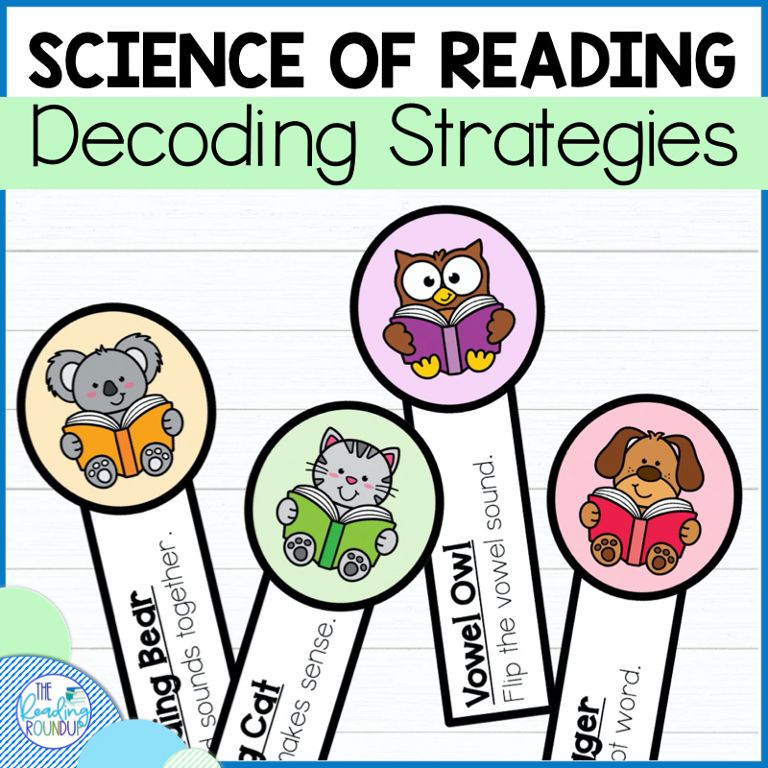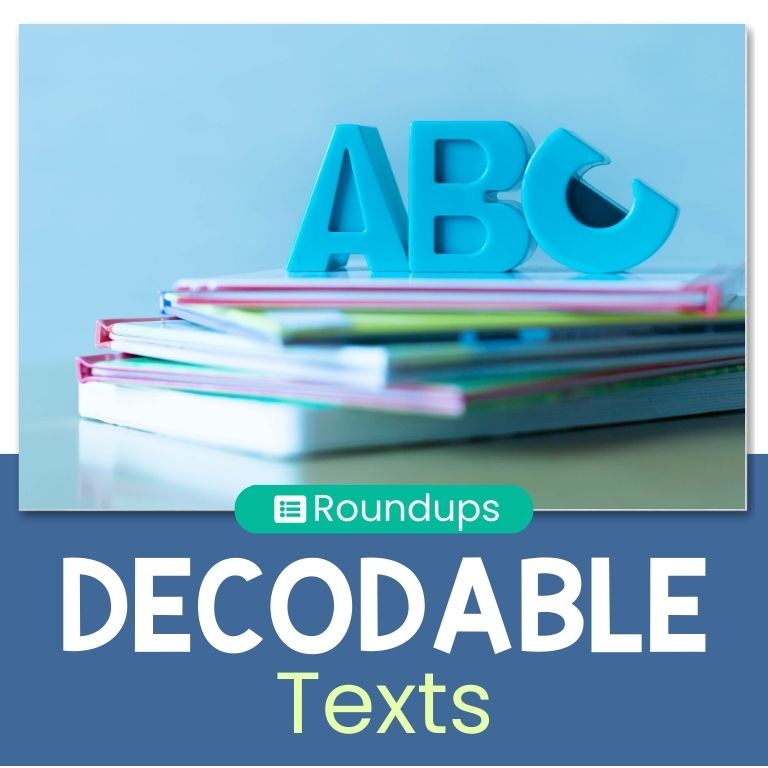
Have you heard of the Science of Reading but are not sure where to begin? Do you wonder how to provide students with strategies that help them decode unknown words without guessing? In this post, I’ll share tips for introducing my new and improved decoding strategies that are aligned with the Science of Reading.
Science of Reading Strategies
The beanie baby decoding strategies are very popular but can teach students to guess a word. I came up with new decoding strategies that are aligned with the Science of Reading. But these new strategies still use the most effective part of the beanie baby strategies – visual reminders of the decoding strategies! Meet the new decoding strategies with this introductory post!

Introducing the Science of Reading Strategies
When introducing the decoding strategies, it’s best to focus on one strategy at a time. This provides students with ample opportunities to practice the strategy so they begin to internalize them. With Kindergarten and 1st grade, you may only want to introduce one strategy a week. Wait until students are able to explain the strategy and are beginning to independently use it before moving on to the next one. This timing may vary depending on students’ needs. With 2nd graders, you’ll be able to introduce a couple of strategies a week as it is just a review for them.
You do not need to teach the strategies in a specific order, nor do you need to teach all of them! Just use your judgment and teach the ones your students actually need!
Steps for Introducing the Reading Strategies
You can use the following steps each time you introduce a new Science of Reading strategy. The timing of how often you introduce a new strategy and how quickly you work through each step will vary depending on your students’ needs. But each time you introduce a new strategy you’ll want to follow this same Gradual Release of Responsibility process over multiple days. This helps students internalize the strategy so they can begin to implement them independently while reading.
Step #1: Model the Strategy
Model the strategy with a word on a whiteboard. You’ll also want to model within text by using a shared book or in a book for your small group reading lesson. Use a think-aloud approach to verbally express your thought process and actions taken when implementing the strategy.
Step #2: Display the Strategy

Display the corresponding poster to use as a reference, preferably in an area close to where you are working with your reading small groups. Only post the strategy as you introduce it rather than having the display already set up with all of the strategies. This helps students focus on the targeted strategy and prevents it from being too distracting or overwhelming.
Step #3: Practice Together
After implementing the “I Do” part of the Gradual Release of Responsibility progress, the next step is “We Do.” During this step, the teacher should work with a group of students to practice the strategy together. Continue to model and prompt students during this time.
Step #4: Encourage Independence
Next comes the “You Do” part of the Gradual Release of Responsibility in which students try it on their own. This authentic practice helps students internalize the strategy which prepares them to implement the strategies more independently.

One way I do this is by placing stuffed animals on the table as a reminder of the strategies. Prompt students when they get stuck on a word to identify which strategy they think will help. Support students as they attempt to use the strategy. Make sure they physically grab the animal that they want to try using because it helps them take ownership of the strategy.

If you do not have stuffed animals, you can print Strategy Sticks. The important part is having students physically pick a strategy. Doing so helps to make them more aware of the decision-making process required when stuck on a word and deciding which strategy to try.
This step is only a scaffold to use when initially introducing and practicing the strategies. Eventually, we want students to apply the strategies independently without needing the physical and visual reminders of the strategies.
Step #5: Explain the Strategies Used
After students have finished reading during your small group, highlight the students who used the decoding strategies. Explain to the group how the student used the strategy to successfully decode the unknown word. Eventually, through enough modeling, the students will be able to explain it themselves. I also like to hand students the stuffed animals that represent the strategies they used. It is a tactile reminder of the strategies, but it also acts as a reward for students as they get excited to hold the animals!
You may also want to send a letter to families explaining the strategies so they can encourage students to implement them at home. You can also send home a note celebrating when a child independently uses a strategy!

Step #6: Reflect

Provide opportunities for students to reflect on their implementation of the strategies. At the end of each small group lesson, the students can complete an exit ticket. This can be done orally or in writing. Students can reflect on which strategies they used and how beneficial it was in helping them decode unknown words.
Tips for Implementation
While following these steps may take multiple weeks, it’s important to take the time rather than rushing through them all. These steps help students take more ownership of the strategies so they can independently implement them while reading.
It is important to constantly have students explain the strategies to you. They must tell you the decoding strategy and NOT just the name of the animal. For example – encourage them to say “I can break a word into syllables,” not just “Syllable Sloth.” When they get stuck on a word, ask them to explain what they can try. If a student successfully implements a strategy to decode an unknown word, ask him/her to explain what they did. By having them orally explain the strategy to you they will begin to internalize it more.
Begin each small group lesson with a quick review of the strategies previously taught. Ask the students to tell what they can do if they get stuck on a word. They must explain the strategy and not just the name of the strategy. Once students identify a strategy, I toss them the corresponding stuffed animal. This simple warm up activity gets them excited to read and build their confidence in their ability to figure out any unknown words they encounter.
These animal decoding strategies are just a scaffold. Once students can verbally explain the strategies and independently implement them, it is no longer necessary to use visual and physical prompts to remind students of the strategies. The posters may remain up all year for students to refer to, but as a result of the extensive work practicing the strategies at the beginning of the year, students will rarely need to refer to the posters.

Do you use similar decoding strategies with your students or is there something else you find to be more beneficial? Share your tips in the comments below!
Want to Learn More?
You’ll love these related posts!

WANT TO PIN THIS FOR LATER?














I am very interested to try these strategies for my 1st grade class.
I am interested to learn about these strategies.